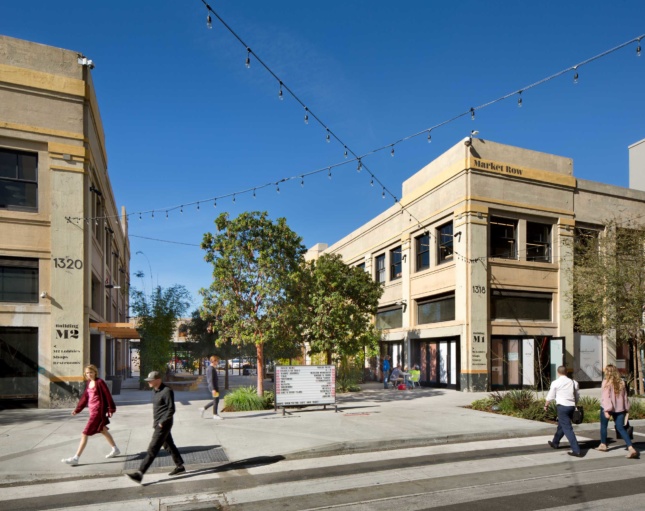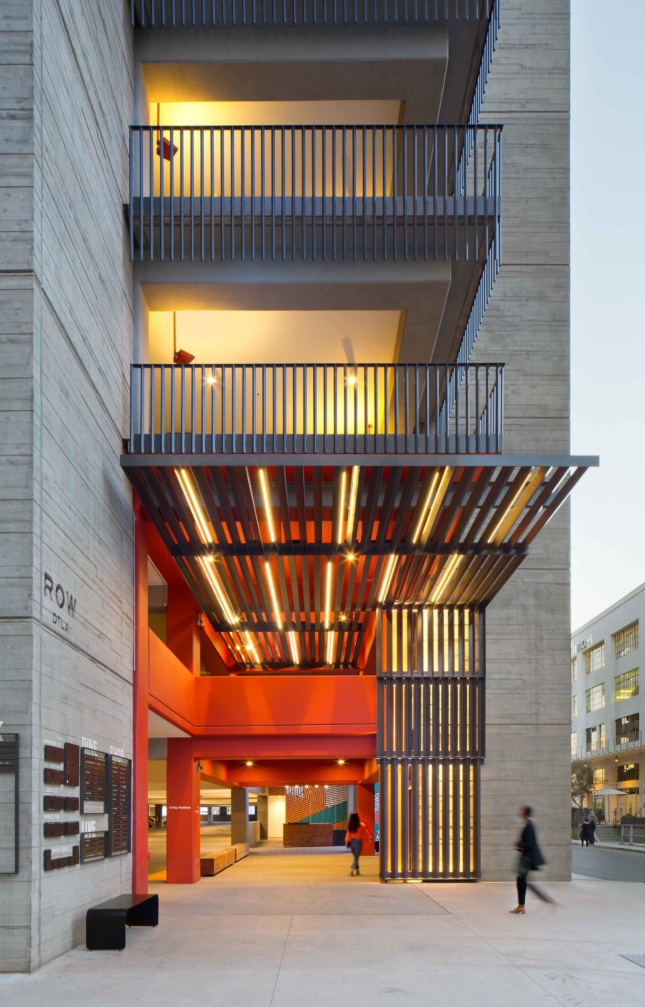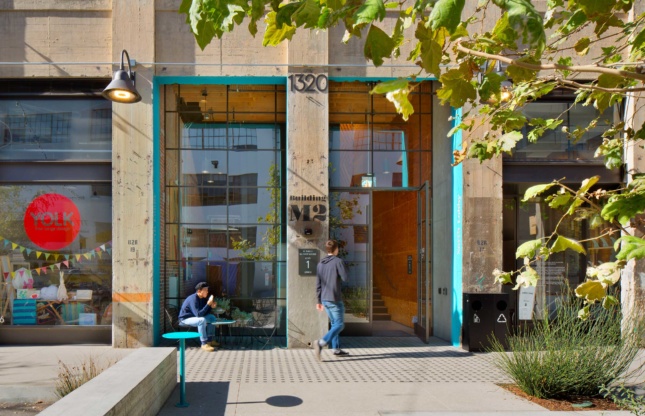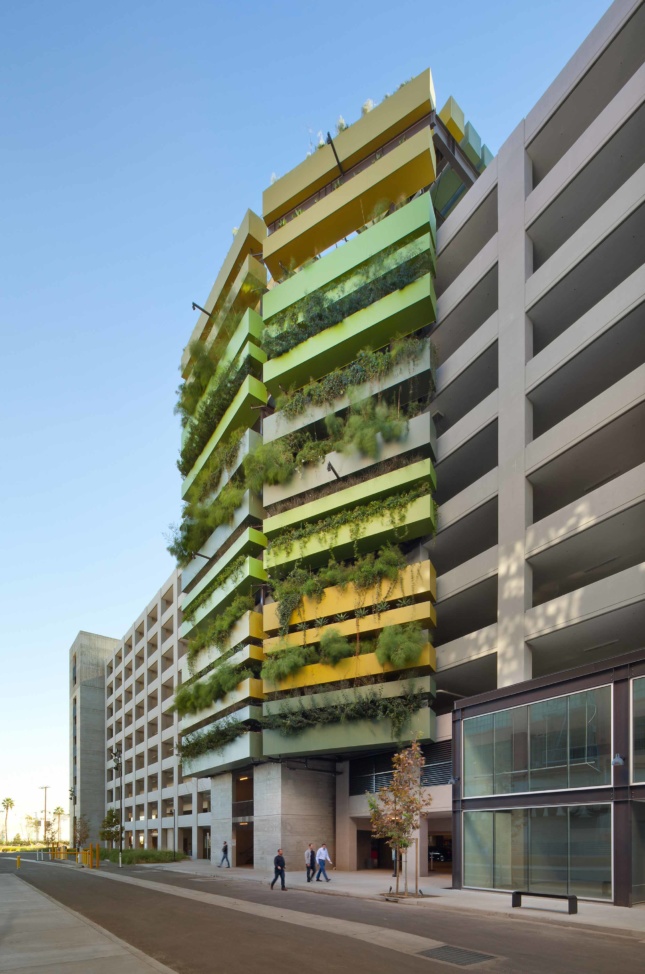Bringing new life to the historic Los Angeles Terminal Market, Rios Clementi Hale (RCH) designed ROW DTLA to reinterpret the industrial nature of the Southern Pacific Railroad’s major produce hub. Reimagining the site where goods were once unloaded from railroad cars and delivered across Southern California, the team designed new storefront systems for ROW that embraced the site’s historic character through industrial materials and raw utilitarian details.
- Facade
Manufacturer
StileLine
U.S. Aluminum Corp.
Sign Excellence
CA Signs
Signmakers
Christopher Simmons
Flux
Vitro - Architect
Rios Clementi Hale Studios
House & Robertson Architects
- Facade
Installer
BreakThru Glass
Universal Ironworks
Harris Glass
Liberty Glass & Metal
- Location
Los Angeles, CA - Date of
Completion
2017 - Products
StileLine Storefront
Flush Front Storefront
Vitro Solarban 70
Building upon the existing concrete storefronts throughout ROW’s 30-acre campus, the project transformed the long warehouse-style structures by using steel facade systems and street art. Each building featured different storefront and facade designs. RCH’s approach uses modern storefront systems that would support new pedestrian retail activity, but also feel at home within the historic industrial facades. The team utilized a palette of cut metals and neutral tones alongside artists’ murals, and storefront systems by facade manufacturers StileLine and U.S. Aluminum Corp.
In the Produce Buildings, the team specified aluminum storefronts with a wide-flange header and sill. To create strong indoor-outdoor connections in the office lobbies, the team designed a custom steel angle divided light system that is visually thin to allow visibility through it. For building two, RCH worked with House & Robertson Architects and StileLine to create steel storefronts with custom concrete sills. The approach is echoed in building three, where the custom sills are placed alongside refurbished original steel windows and aluminum storefront windows with a one-inch IGU. This also where Flush Front Storefront was used and Solarban 70 glass, specified for its transparent, color-neutral aesthetic and solar control.
RCH creative director Sebastian Salvadó explained the restoration and facade systems used throughout the spaces, saying that, “For the Produce Building’s retail facades, we used crisp aluminum frames combined with steel wide flanges to add a level of detail along the more intimately scaled shopping street. In the industrial warehouse-style buildings, we used a rolled steel frame system. The tough, institutional quality, with its exposed screws and ability to span tall heights, worked well with the massive concrete warehouse buildings and their tall, first floor spaces.”
The existing produce market, where L.A.’s bodegas have long sourced their fruits and vegetables, was left largely unchanged. At the southwest corner of the site, a cascading rooftop park was added to a new 10-story, 4,000-space parking garage. The greenery along its walls was designed to be emblematic of the landscape approach, which encourages nature to gradually encroach on the old industrial site. Together, ROW DTLA incorporate 100 years of Los Angeles history into a 21st-century commercial district that links Downtown L.A. to the burgeoning arts district.
RCH creative director Sebastian Salvadó will present the ROW DTLA at Facades+ LA on November 14 as part of the “Adaptive Reuse and Context” panel.


















